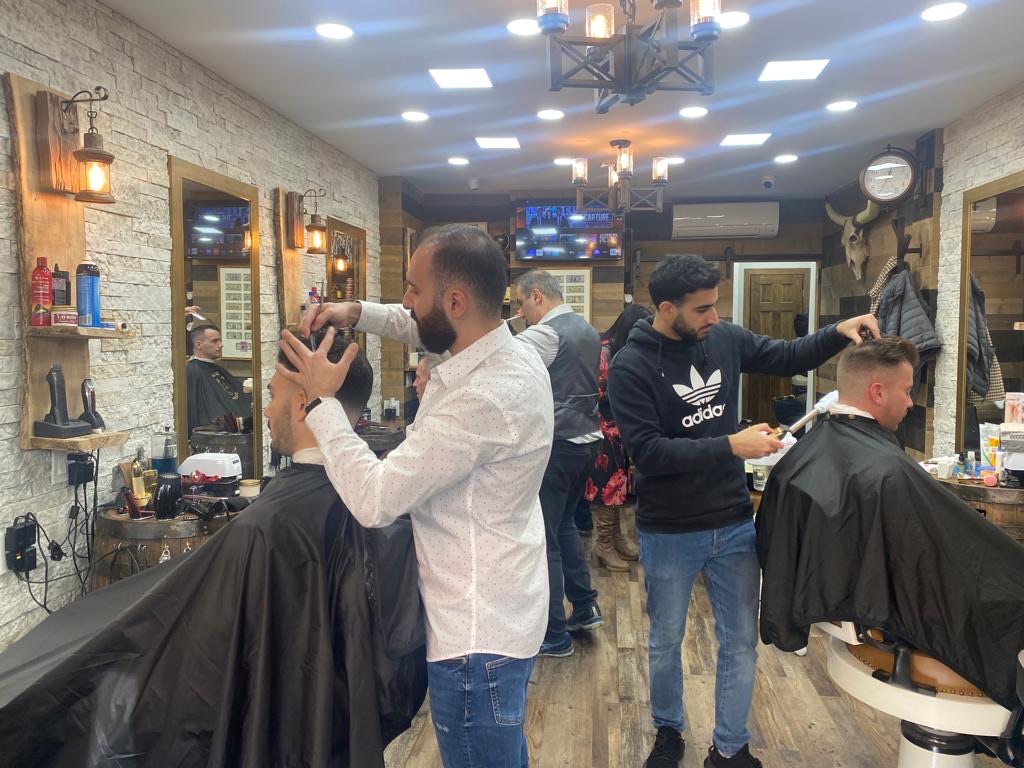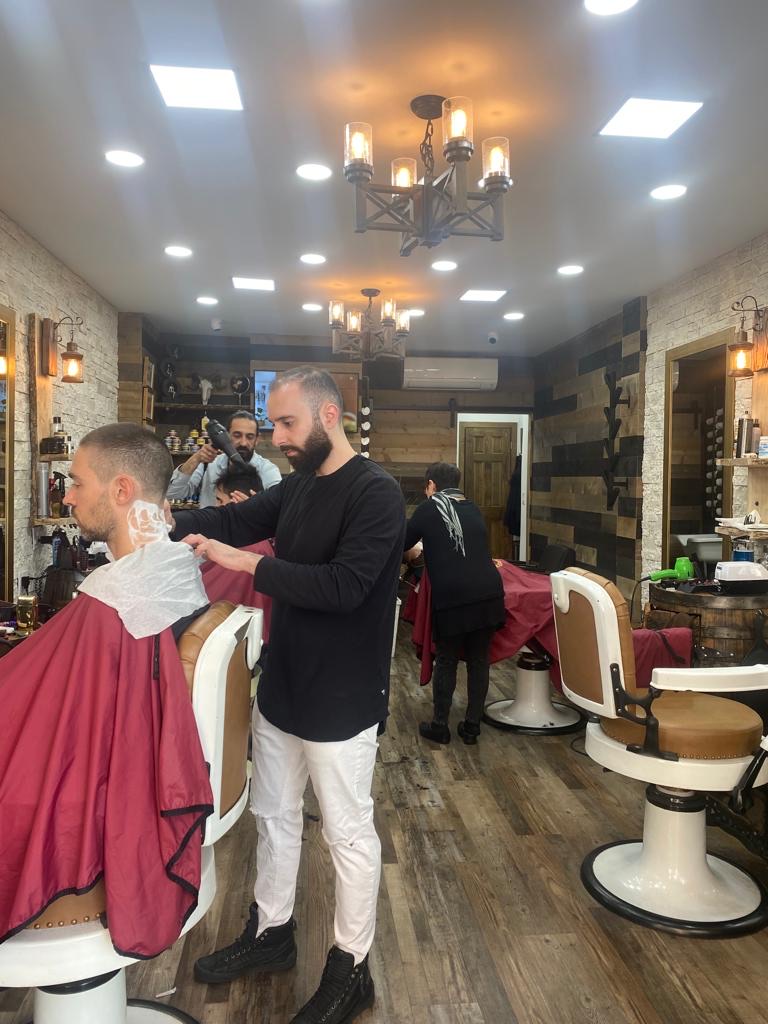Frequently Asked Questions
In NYC barbershops, the key differences in technique between low, mid, and high fades revolve around the starting point and gradient of the fade. A low fade begins just above the ears and curves around the nape, creating a subtle transition that maintains more hair length on the sides, often blending into the beard line. Barbers use clippers with guard sizes ranging from #1 to #3 to achieve this gradual taper. The mid fade starts higher, around the temple area, offering a balanced look that provides a more noticeable contrast between the top and sides, often requiring more clipper-over-comb work to ensure a smooth blend. High fades, on the other hand, commence at or above the temple, creating a stark contrast with the top hair, and are characterized by a sharp, dramatic transition that often involves skin fading techniques, where the barber uses a zero or no guard to achieve a clean, bald finish. Each fade type requires precision and an understanding of head shape to ensure a flattering silhouette, with barbers often employing techniques like scissor-over-comb and razor detailing to refine the final look.
NYC barbershops customize low fades for different hair textures by employing a variety of techniques and tools tailored to individual hair types, ensuring a personalized grooming experience. For coarse or curly hair, barbers often use clippers with adjustable guards to achieve a smooth transition from the skin to the desired length, while incorporating techniques like clipper-over-comb to maintain texture and volume. For straight or fine hair, they might use scissors for precision cutting, blending the fade seamlessly into the natural hairline. Barbers also consider factors such as hair density, growth patterns, and scalp shape, using tapering techniques to create a balanced and flattering silhouette. Additionally, they may apply specialized products like pomades or styling creams to enhance the fade's definition and longevity, ensuring the haircut complements the client's personal style and facial features. By understanding the nuances of different hair textures, NYC barbers can deliver low fades that are both stylish and tailored to the unique needs of each client.
In NYC barbershops, the most popular mid fade styles often include the classic mid fade with a textured top, which seamlessly blends the hair from a longer length on top to a shorter length on the sides, creating a versatile and clean look. The mid skin fade, which tapers down to the skin around the temples, is also highly requested for its sharp and edgy appearance. Many clients opt for the mid drop fade, where the fade line curves down behind the ear, adding a unique contour to the hairstyle. The pompadour with a mid fade is another favorite, combining a voluminous top with a sleek fade for a modern twist on a vintage style. Additionally, the mid fade with a quiff is popular, offering a stylish lift at the front that pairs well with the fade's gradual transition. These styles are often enhanced with precise line-ups and beard trims, making them a staple in the diverse and fashion-forward landscape of New York City's grooming scene.
High fades in NYC barbershops are tailored to accommodate different face shapes by utilizing a combination of techniques and tools that enhance individual features. Barbers consider factors such as the client's hair texture, density, and natural growth patterns to create a fade that complements the face's contours. For round faces, barbers might incorporate a higher fade with more volume on top to elongate the appearance, while for square faces, they may soften the edges with a gradual taper. Oval faces, being versatile, can handle a variety of fade styles, allowing barbers to experiment with more dramatic contrasts. Barbers also use clippers with adjustable guards, scissors for precision cutting, and razors for clean lines to ensure the fade transitions smoothly from the temples to the nape. By customizing the fade's height and gradient, NYC barbers can accentuate cheekbones, jawlines, and other facial features, ensuring each client leaves with a personalized and flattering haircut.
In New York City, the cost of a fade haircut can vary significantly depending on the barbershop's location, reputation, and the barber's expertise. For a low fade, prices typically range from $20 to $40 at more budget-friendly barbershops, often found in neighborhoods with a high density of barbershops. Mid fades, which require more skill and precision, generally cost between $30 and $60, especially in mid-range establishments that focus on quality and customer experience. High fades, often considered a more intricate style, can range from $50 to $100 or more in upscale barbershops, particularly those located in trendy areas like Manhattan or Brooklyn, where the demand for high-end grooming services is higher. These prices can also be influenced by additional services such as beard trims, hot towel treatments, or the use of premium grooming products, which are often offered in conjunction with the haircut.

